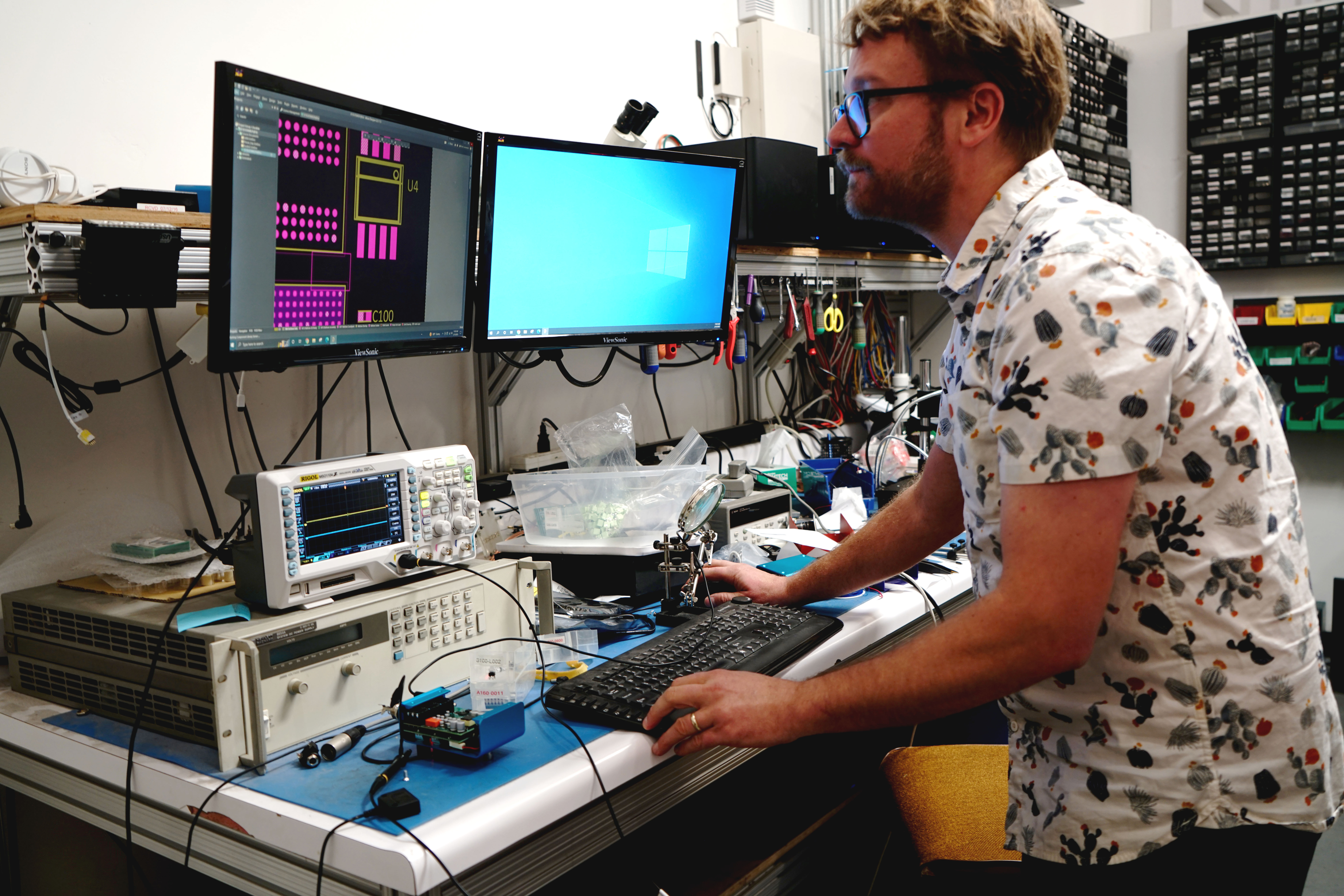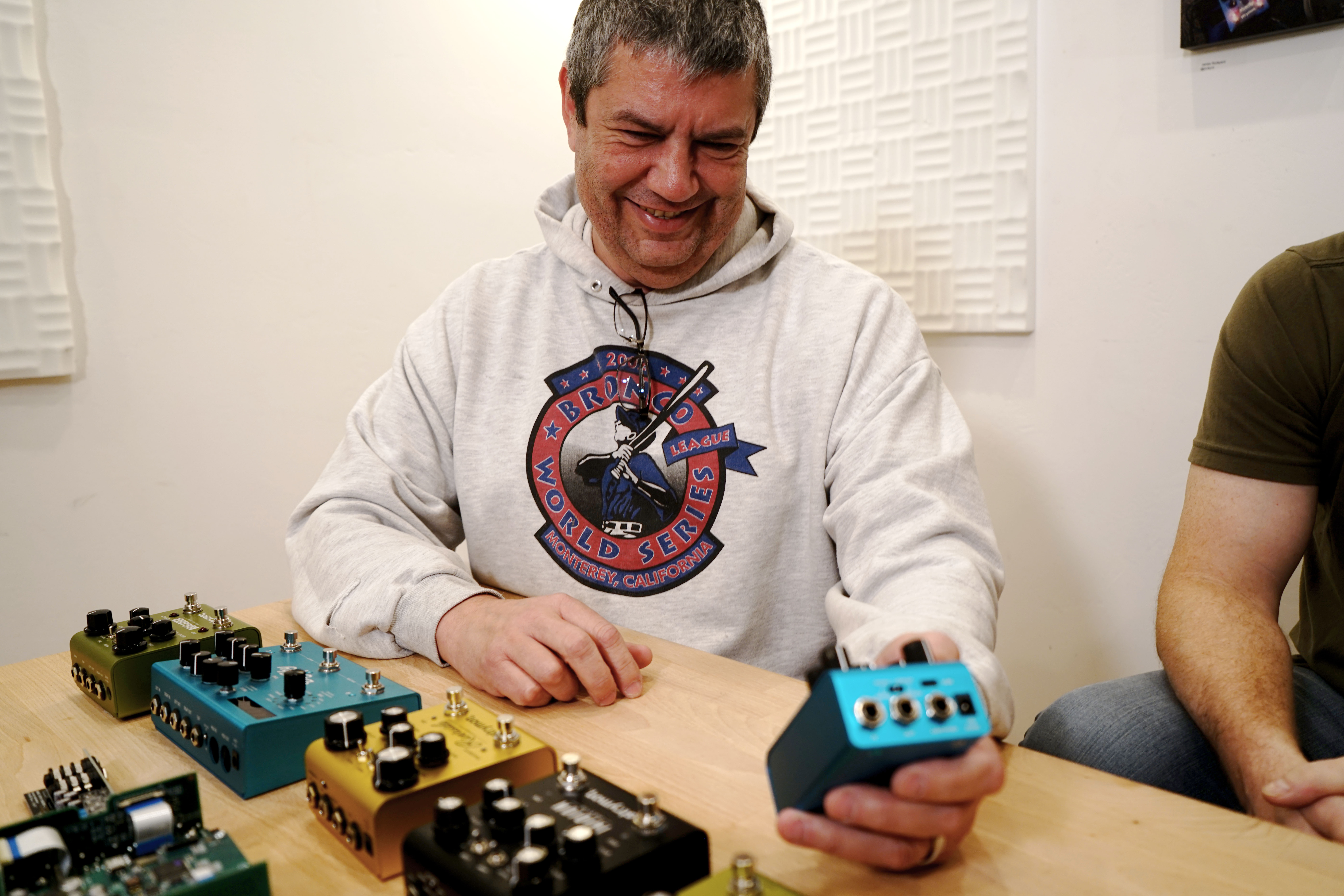In just a few months since launch, the new Strymon Cloudburst reverb pedal has taken the guitar pedal world by storm, becoming a fan favourite in the process and even scoring a perfect 10/10 editor review from guitar.com.
We catch up with the Cloudburst creators from Strymon and dive a little deeper into the design and technology of what many are hailing as the new standard in smaller format, reverb pedal design.
Q1: Firstly, please tell us your names and your position within the company.
I'm Pete Celi, DSP and sound design engineer.
I’m Gregg Stock, CEO and analog circuit engineer.
I’m Dean Miller and I do firmware and DSP work at Strymon.
Q2: I believe Cloudburst is a new series of products, different from the previous Strymon products. What is the concept behind this new series?
Gregg: It’s quite simple really - we wanted to bring the same Strymon audio quality to a smaller form factor.
Q3: How did you decide on the size of the Cloudburst enclosure?
Gregg: We wanted to make it as small as possible. The jacks in the back determine the width and the internal dimensions of the circuit board assemblies determine the height and length.
Q4: What is the main reason for the success in miniaturization? What are some of the major changes from previous products?
Gregg: Using BGA components has allowed us to make our products much smaller. BGA parts don't have leads to hand solder like previous designs, so they need to be installed by people with professional surface-mount equipment.
Q5: What processor does Cloudburst use? Please also tell us why you chose that processor.
Dean: Cloudburst uses a powerful ARM Cortex H730 processor. We chose this processor because it offers the high-level performance needed to run our audio effects, has a fast SDRAM interface with caching capability, and has proven to be reliable in our previous products. It also has USB capability for easy interfacing with a computer, without the need to complicate our system design.
Q6: I understand that since blueSky V2, ARM processors are implemented in a BGA package. What are the advantages of Ball Grid Array?
Gregg: BGA parts are smaller and capable of higher speed operation.
Q7: What were some of the challenges in adopting the BGA package?
Gregg: The need for advanced soldering and inspection equipment. You are not able to hand-solder or visually inspect BGA parts.
Q8: I would like to ask about the analog circuit of Cloudburst. Are these the same circuits as in blueSky V2?
Gregg: We use the same A/D D/A converter and the other analog circuits are mostly identical.
Q9: I believe Cloudburst is an extended model of BigSky's Cloud mode.There are many other creative reverbs in the Strymon product line, such as BigSky's BLOOM mode, but why did you base it on CLOUD mode?
Pete: Yes, there are many other great creative reverbs in BigSky, but the Cloud algorithm has always been the most popular one. We received many requests for a standalone “Cloud” pedal since we released BigSky years ago. We thought we could expand on the original algorithm to allow it to be more versatile, which was a requirement for a standalone pedal.
Q10: The effects in Cloudburst seem to have been carefully selected to stimulate the creativity of musicians. As a developer, what style of guitarist did you want to appeal to?
Dean: I really wanted to expand on how good the original cloud algorithm in BigSky sounds when you’re playing chords. As a guitarist I play a lot of chords and sometimes I love having a lush pad-like reverb to fill up some of the space around what I’m playing.
Pete: We modified the algorithm so it would be capable of reverbs ranging from small and short to huge and spacious. So, it really is something that we hope appeals to a wide range of guitarists as well. But the addition of the Ensemble effect does tilt the aim towards ambient players that are looking for unique layers and synth-like pads.
Q11: The description of Cloudburst and BigSky's Cloud mode says that it is based on a gorgeous reverb developed in the late 70s. Are these models based on Lexicon 224?
Pete: The description actually says “Cloud is a gorgeous reverb that draws on techniques developed in the late '70s”. This refers to the structure of interconnected loops of all-pass filters and delays, which is a technique developed in the '70s by David Griesinger at Lexicon. But Cloud is not based on a particular Lexicon reverb.
Q12: Cloudburst has an ENSEMBLE switch that creates a Mellotron-like sound. How did you come up with the idea for the ENSEMBLE function?
Dean: The Ensemble algorithm was designed separate from Cloudburst as a way to enhance the harmonic content of a guitar signal. We recognized that the algorithm had some very attractive qualities in that it could be tuned to accept a wide variety of input signals. This made it a great pair with a big reverb that would live near the end of your signal chain. It could be made computationally efficient enough to run alongside the reverb and would get great sounds out the reverb that you couldn’t’ get with just a guitar input.
Q13: I was surprised to see how the effects are applied by changing the picking position and pickups. What is the mechanism behind this?
Dean: This is because the algorithm doesn’t try to make any assumptions about the fundamental frequencies of notes, and instead is interested in enhancing all the harmonic content in the signal in a pleasing way. This allows for a lot of variability in the sounds you can get from the algorithm by making subtle changes to how or where you play on the guitar.
Q14: Strymon's reverb used to have a one-touch function to change to a different setting (such as blueSky's FAV function), but Cloudburst does not. Why did they discontinue it?
Pete: Pedal-board space is a consideration when people are considering new pedals, and we wanted Cloudburst to be a s small as possible. We didn't feel that cramming another footswitch on the pedal was practical in use on stage, but we allowed for full control and preset storage/recall through MIDI. So, if someone needs to access the 300 presets they can do so through MIDI.
Q15: I was wondering why the default setting for dry signal in Cloudburst is digital mode. Can you tell me why the digital mode is the default?
Pete: In our larger pedals, there is a dig-pot (digitally controlled analog potentiometer) to control the dry level. This allows the dry signal to stay analog and go from 100% full level and taper smoothly to off. Cloudburst does not have a dig-pot, so the analog dry can only be 100% on or fully off. We chose the default to be digital dry to allow full dry to full wet from the Mix knob in a gradual taper like our other pedals. You can switch to analog dry by a power-up option. In the analog dry configuration, the dry signal remains at full level throughout, and the Mix knob is essentially an effect level control.
Q16: Do you plan to release more products in this size enclosure in the future?
Pete: I would expect to see more products in this format in the future. That's all I can say! :)



